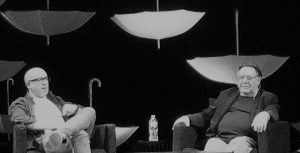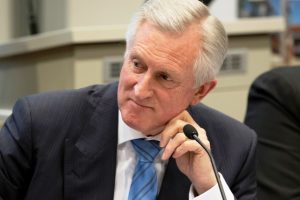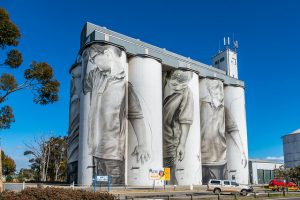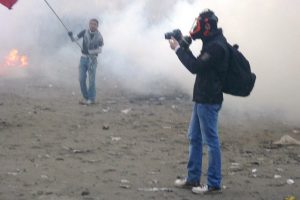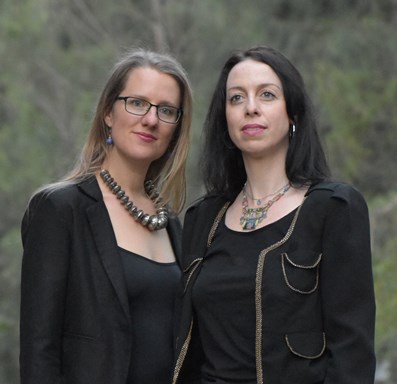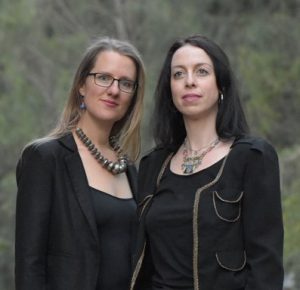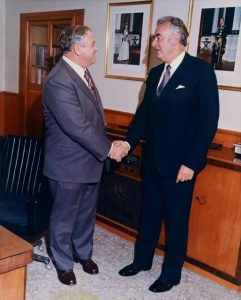
In the interests of better community policing and the fact she had just called an election, Queensland Premier Anastasia Palaszczuk made an unequivocal promise.
The Premier, who somewhere in the Courier-Mail’s Monday election coverage recalls winning a Grade Nine competition to ‘help police fight crime’, made a commitment to hire an extra 400 police officers over the next four years. Based on a First Year Constable’s salary (including shift allowances) of $70,820, that’s a $28.32 million promise
“We back our police with the resources they want, the powers they need and the pay they deserve,” she told the ABC last Sunday.
Crikey, they ought to send a couple up the hill here to Maleny, where the new $2 million police station in Macadamia Drive (staffed by four police officers), has a roaming brief to cover an area from Maleny out to Palmwoods, Beerwah, Conondale and Kenilworth.
Ms Palaszczuk’s election promise to hire more police comes a week before the 1950s-style police station in Maleny’s main street is sold at auction. The 2,344sqm property, which is zoned Community Facilities, includes an office/police station and a residence but excludes a separate lock-up.
On my calculations, this sale alone should provide the Queensland Police Service with enough money to pay the salaries of an extra 21 police officers (over four years).
Against my better judgement, I bought the election special edition of The Courier-Mail on Monday after a three-year hiatus, prompted by a series of inflammatory, misleading and discriminatory front pages. Monday’s page one was no less lurid, presenting unflattering caricatures of the three main party leaders.
I worked there in the broadsheet days, pre-tabloid, pre-redundancies, pre-online editions, four editors ago. No regrets, Coyote, as Joni would say. I entered my 70th year on Monday, BP 120/80, feeling OK and supremely relieved I had no part to play in the CM’s graphics-laden presentation of an unwinnable election.
The first two pages of the CM’s October 30 election special purport to sell us the idea they have the State’s media covered. In what amounts to a two-page ‘house ad’, the CM confirms what we already knew – Rupert Murdoch’s Queensland media empire owns almost all of the print media titles. So yes, they have it covered, but you’d expect the coverage to be suitably mainstream; about 9% of the eleven-page election coverage was set aside for stories about the Greens and how they hope to win three seats, including Deputy Premier Jackie’s Trad’s seat of South Brisbane. It appears (from vox pops interviews), that some people in West End will be voting Green because of over-development (apartments) in the inner city suburb.
The rest of the coverage focuses on the resurgence of One Nation, how Labor will suffer from its seemingly intractable position on the Adani coal mine (no mention that the LNP are all for it too), a token story about the Katter Party and proportional space for (most of) the party leaders to have their say.
So to the unwinnable election
There’s a fair chance no single party will emerge from the November 25 poll with a workable majority, so in this sense it is unwinnable.
Crikey’s Perth-based election analyst, Poll Bludger, quoted ReachTEL polling figures from September showing the LNP with a 52-48 lead on primary votes. One Nation was polling at 19.5% and Greens at 8.1%.
An earlier Newspoll had Labor on 37% and the LNP on 34%. Some of you might take this to mean that the two parties will take 71% of the primary vote. This is roughly in line with election trends around the world where one in three people did not vote for one of the major parties. This leaves the unallocated 29% to be divided up between the Greens, One Nation, Independents, minor parties and the 2% of the electorate who cast informal votes.
The poll numbers, which focus only on primary votes, are not worth much in light of the return to compulsory preferential voting (CPV). To the uninitiated, this means numbering your preferred candidate 1 and then others in order of preference (meaning the party you like the least goes last). So if no single candidate has a clear majority, second preferences of the party that polled the least number of votes are counted until a winner emerges.
Many people do not understand preferential voting, so when handed a how-to-vote-card at the polling booth, they simply fill in the numbers as suggested (or number all candidates 1 to 6 consecutively, which is known as the “Donkey Vote.”)
An Australian Institute poll last year found that only 29% of respondents knew how to correctly fill in the (preferential) Senate ballot paper. So that is not a good sign for the re-introduction of compulsory preferential voting at this election. As Griffith University’s Paul Williams pointed out (in the CM), the Australian Electoral Commission is yet to conduct an information campaign to ensure CPV is clearly understood.
University of Melbourne honorary associate Adrian Beaumont has more to say about polling and CPV in The Conversation.
The Sydney Morning Herald suggested on Monday that the return of full preferential voting and new electoral boundaries could hand One Nation a balance of power role.
Enter stage right, former Senator Malcolm Roberts, booted out after a High Court decision found he had not renounced his British citizenship.
By challenging the seat of Ipswich for One Nation, Mr Roberts, best known for his climate change conspiracy theories, could attract enough LNP second preferences to win the seat, the article suggests. (I would go ‘aarrgghh’ at this stage but that would be editorialising).
ABC election analyst Antony Green told the SMH Roberts faced an uphill battle.
“It would be highly surprising if One Nation won there on first preferences, which would mean they would have to come from behind on LNP preferences,” he said.
Ipswich West was more likely to fall to One Nation, he said, adding that One Nation also had a good chance of winning the neighbouring seat of Lockyer.
Ipswich was where Pauline Hanson originally built her One Nation party in the 1990s. Should Roberts prevail, he is being tipped to lead One Nation in Queensland. What was that about the Lord Mayor’s show and the dust cart?
On latest polling, One Nation at 19.5% would seem to be in a strong position to win seats in Queensland and maybe also control the balance of power. A scary notion for some, but you have to give credit where it is due: Pauline Hanson has found the ear of disgruntled voters, much as Donald Trump wooed that endangered species US filmmaker Michael Moore called ‘angry white men’.
In Queensland, the angry, the poor and those who feel forgotten are listening and Hanson tells them what they want to hear.
There is only one certainty about the Queensland election, whoever cobbles together a coalition from this mess will have a mandated four years in which to rule – that’s 208 ‘Fridays on our minds’…#aarrgghh

